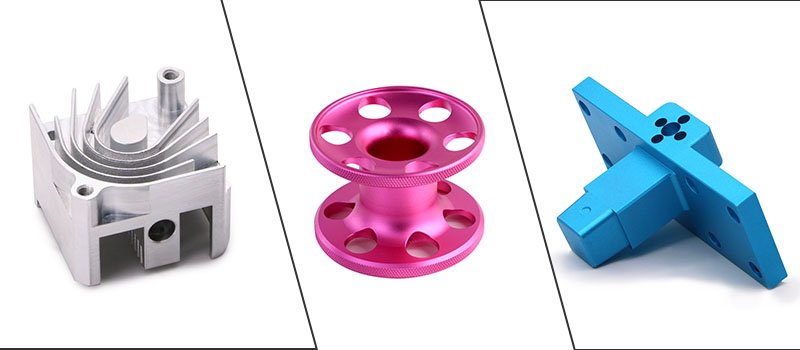When it comes to aluminum CNC machining, achieving consistent surface finishes is often a significant challenge. Whether you’re a manufacturing engineer, a quality control specialist, or someone managing production timelines, you might have faced issues like color inconsistencies, poor surface quality, or delays in meeting deadlines. Today, I’ll dive into my insights as a CNC machining expert, tackling the root causes of color inconsistencies and offering practical solutions to help you avoid these headaches.
Why Do Surface Color Inconsistencies Happen in CNC Machining?
Before we jump into solutions, let’s understand the problem in detail. Imagine you’ve just received a batch of aluminum parts, and instead of the sleek, uniform finish you expected, you notice some parts have darker areas, streaks, or even discoloration. Why does this happen?
Several factors contribute to surface color inconsistencies in CNC-machined aluminum parts:
- Material Quality Variations
Did you know that the composition of aluminum alloys can vary between suppliers? Even slight differences in the alloy’s composition, grain size, or impurity levels can lead to color deviations. For example, alloys like 6061 and 7075, commonly used in CNC machining, are sensitive to heat treatments and surface finishes, which can amplify inconsistencies. - Improper Surface Treatments
Anodizing, painting, or powder coating can easily go wrong without proper control. Variations in the anodizing bath’s temperature, chemical composition, or duration can lead to uneven finishes. - Tool Wear and Machining Conditions
Are your tools sharp and well-maintained? Dull tools or improper feed rates can cause micro-scratches or uneven surface textures, which become glaringly obvious after finishing. - Contamination
Even a tiny speck of oil, dirt, or residue during processing can affect the surface finish, leading to patches of discoloration.
The Hidden Costs of Ignoring Surface Color Issues
You might wonder: “Is this really worth worrying about?” My answer is a resounding yes! Inconsistent surface finishes aren’t just an aesthetic issue. They can have serious implications, including:
- Customer Dissatisfaction: A mismatched color palette can ruin a product’s appeal, leading to returns or lost clients.
- Increased Costs: Rework and scrapped materials eat into your profits.
- Reputation Damage: Quality issues undermine trust in your brand.
Would you accept a smartphone with mismatched finishes? Probably not. Your customers feel the same way about your aluminum CNC parts.
My Proven Solutions to Fix Surface Color Issues
Now that we know the causes and consequences, let’s explore actionable solutions. Below, I’ll outline my tried-and-true methods to address surface color inconsistencies.
1. Start with High-Quality Aluminum
The foundation of a perfect finish begins with the material. Always source aluminum from reputable suppliers with consistent quality standards. Conduct alloy composition tests if needed to ensure uniformity across batches.
Pro Tip: Opt for alloys that are well-suited for the desired finish. For example, 6061 is great for anodizing due to its balanced silicon and magnesium content.
2. Optimize Machining Parameters
Machining parameters like feed rate, cutting speed, and tool sharpness play a critical role in surface quality. Here’s what I’ve learned:
- Use sharp tools to avoid introducing scratches.
- Maintain consistent feed rates to ensure smooth surfaces.
- Minimize vibrations, as these can lead to uneven finishes.
Regular maintenance of your CNC machines ensures consistent performance.
3. Perfect Your Surface Treatment Processes
Surface treatments like anodizing or powder coating require precision and control. To achieve uniform color:
- Monitor bath chemistry: Ensure the electrolyte composition is consistent during anodizing.
- Control temperature: Temperature fluctuations during anodizing or heat treatment can cause discoloration.
- Ensure proper rinsing: Residual chemicals can lead to staining or uneven finishes.
4. Implement Rigorous Quality Control
Quality checks should be your safety net. Here’s what I recommend:
- Inspect raw materials: Look for variations in color, texture, or composition.
- Conduct in-process inspections: Catch issues early during machining or finishing.
- Use advanced tools like spectrophotometers to measure color consistency.
Interactive Moment: How robust are your current QC processes? Could they catch subtle inconsistencies before shipping?
5. Minimize Contamination
A clean workspace is critical for flawless finishes. Small contaminants can wreak havoc on surface appearance. Ensure:
- Proper cleaning of aluminum parts before treatments.
- Your CNC machine and finishing areas are free from oils, dirt, or debris.
- Tools are stored properly to avoid contamination.
Real-Life Case Study: How YL-Machining Solved a Major Surface Issue
At YL-Machining, we once faced a significant problem with a batch of CNC-machined parts for a high-profile client. Despite using high-grade aluminum, the anodized finish came out uneven. Here’s what we did:
- Root Cause Analysis: Our team discovered that the anodizing bath temperature fluctuated due to faulty sensors.
- Implementation: We replaced the sensors, adjusted the bath chemistry, and re-trained staff on proper procedures.
- Outcome: The next batch was flawless, and the client was thrilled.
Future-Proofing: Avoiding Surface Issues Altogether
The best solution is prevention. Here are a few steps to future-proof your process:
- Invest in automated systems to monitor machining and finishing parameters.
- Regularly train staff on the latest techniques and best practices.
- Stay updated on innovative surface treatments to expand your capabilities.
Wrapping It Up
Addressing surface color inconsistencies in CNC-machined aluminum isn’t just about fixing problems—it’s about ensuring your customers receive the highest quality products every time. By understanding the root causes, optimizing processes, and implementing robust quality controls, you can eliminate these issues for good.
At YL-Machining, we’re committed to delivering precision and consistency in every part we produce. If you’re ready to tackle surface inconsistencies or need expert machining solutions, feel free to reach out.
So, how are you planning to improve your machining processes today? Share your challenges, and let’s solve them together!






